|
|
|
Rules & Material
The extended Rules
The rules of the original Box are very simple, fun, and easy to learn. However, it doesn't make sense to buy that box just to play with those rules or to
recreate this simple game. Today, it is a valuable collector's item and is priced accordingly, making it underwhelming for the money one has to pay for it.
Like most parts of this site, this section will focus on the extended rules published in the White Dwarf magazine. Here we have, in theory, a nearly complete
Wargame on our hands. There is a PDF available with scans of all White Dwarf Space Fleet issues out there in the net. Look for example in the
Space Fleet Facebook group. Unfortunately, the way it was published
is very confusing and out of order. Making sense of the original articles or the PDF scans requires a serious deep dive. It's possible, but there is a better way.
I took the time and effort to create a new and streamlined rulebook from this mess. Everything is presented in order, with completely new graphics and schematics
made from the ground up. All background information and so-called fluff are removed, and the text is rewritten to tighten everything up. Every token and counter
is newly made in high quality. There are new data cards, a helm computer, and more.
I also made another big change. Instead of special rules for every spaceship, I created general special rules. For example, the special rule for Eldar ships to
determine speed based on the solar wind is now a General Spaceship Trait called Solar Sails, which doesn't have to be repeated on every data card. This makes the
data cards clearer, and I was also able to make them smaller because of that.
Overall, this was a lot of work, and I call the finished rulebook Space Fleet Remastered. If you are interested in it, write me an
email with a short introduction of yourself, and I might share it with you. Alternativly you could look for it in the
already mentioned Facebook group.
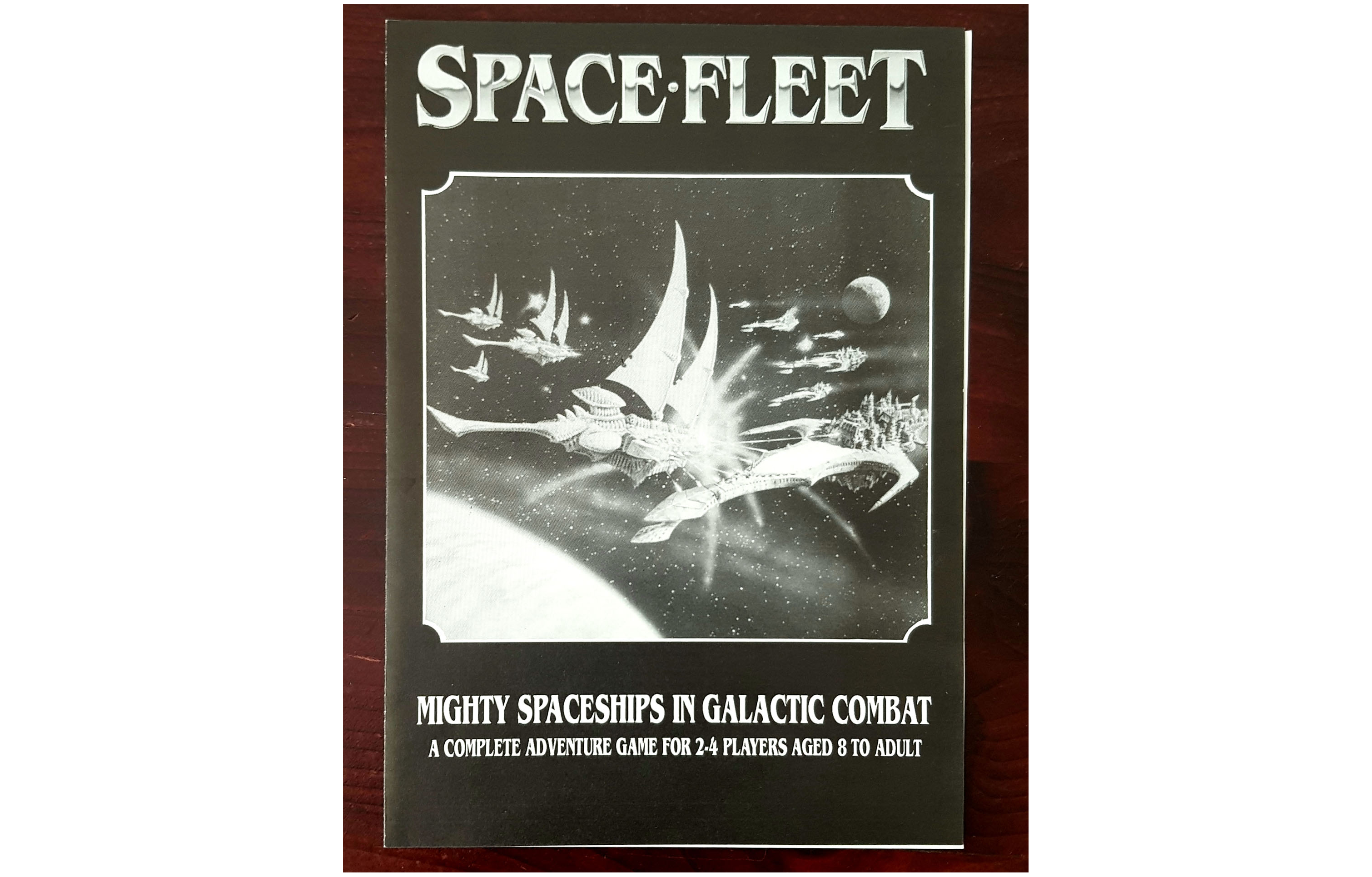 |
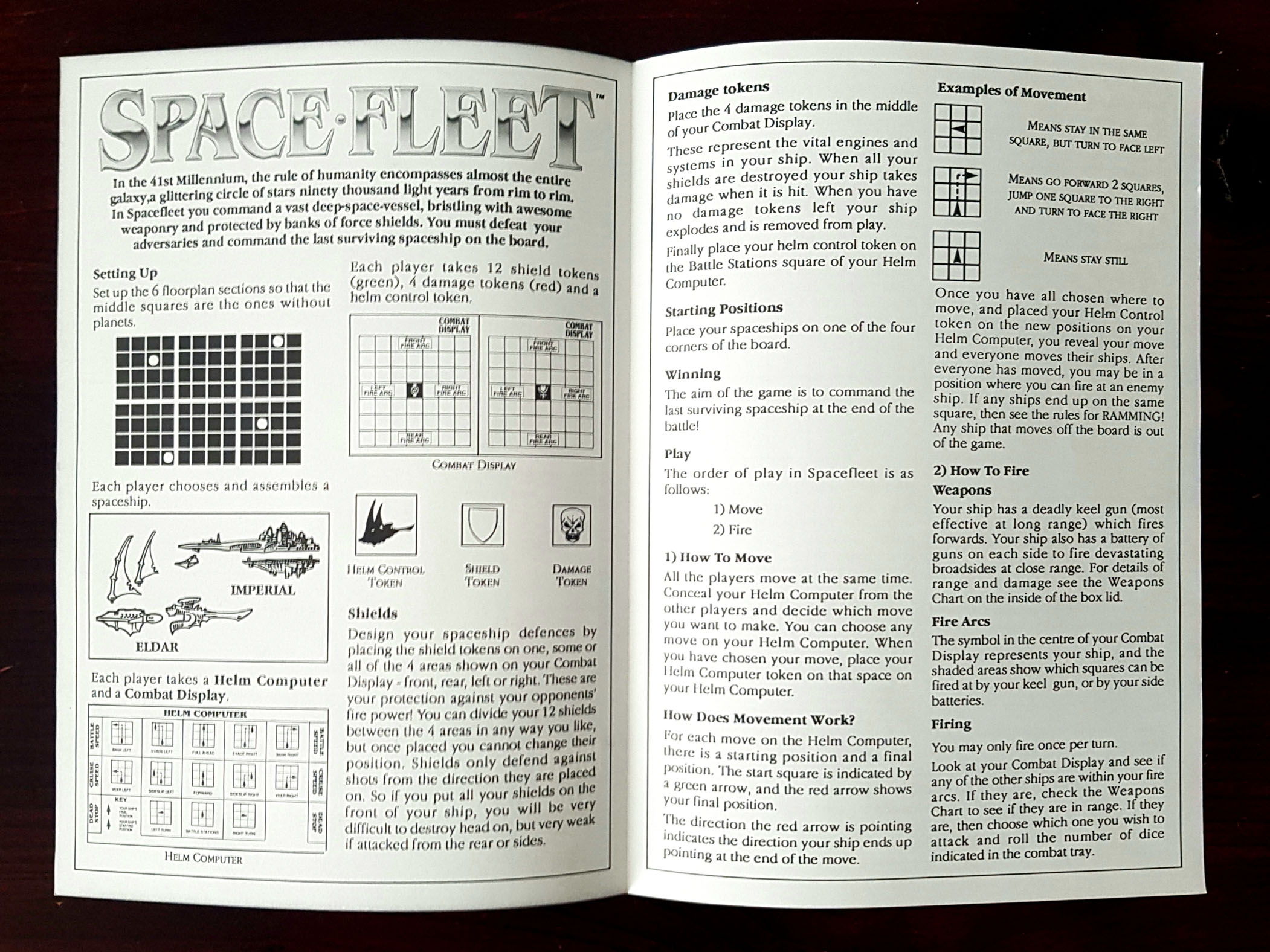 |
| The original Space Fleet rules. |
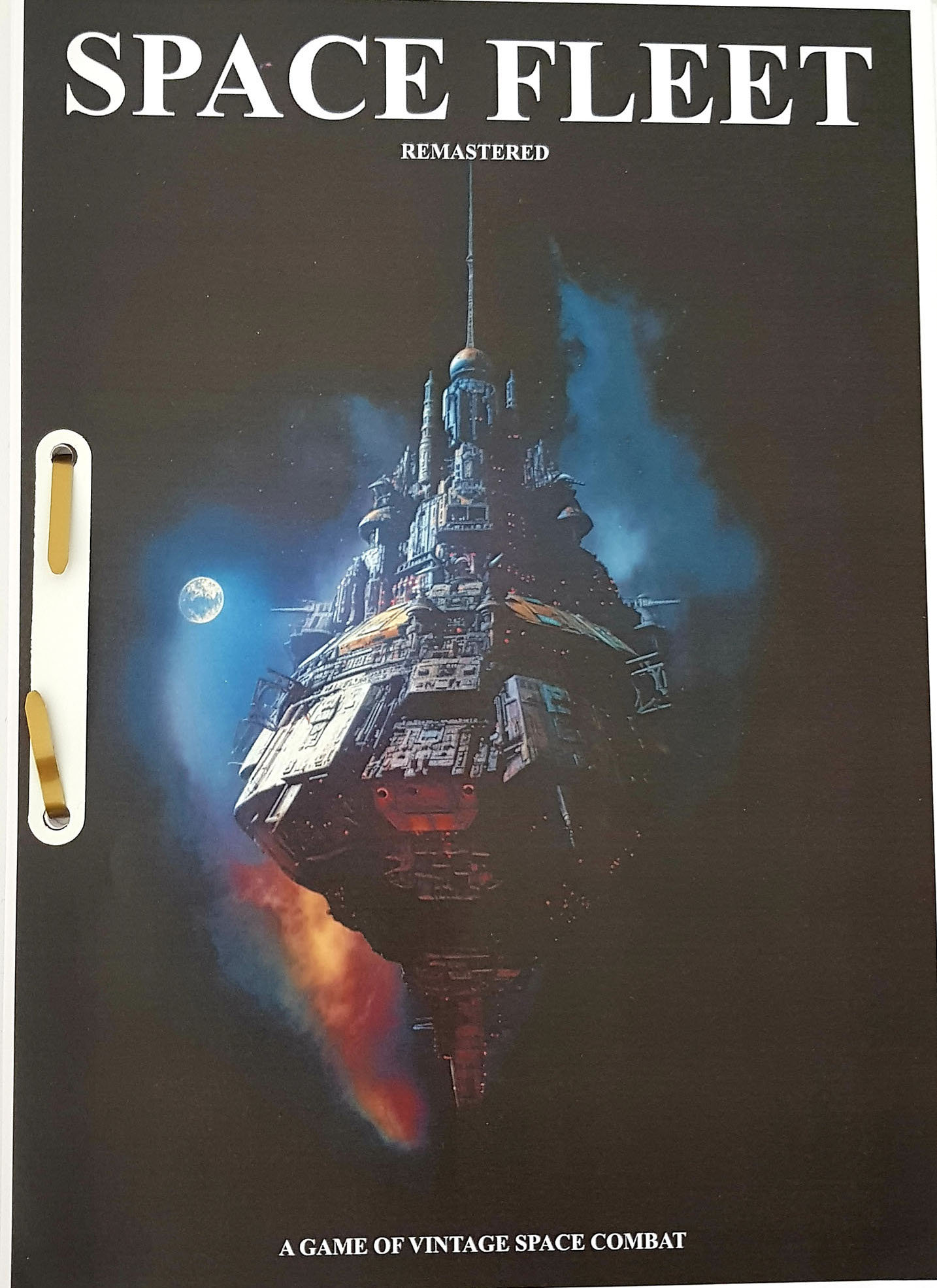 |
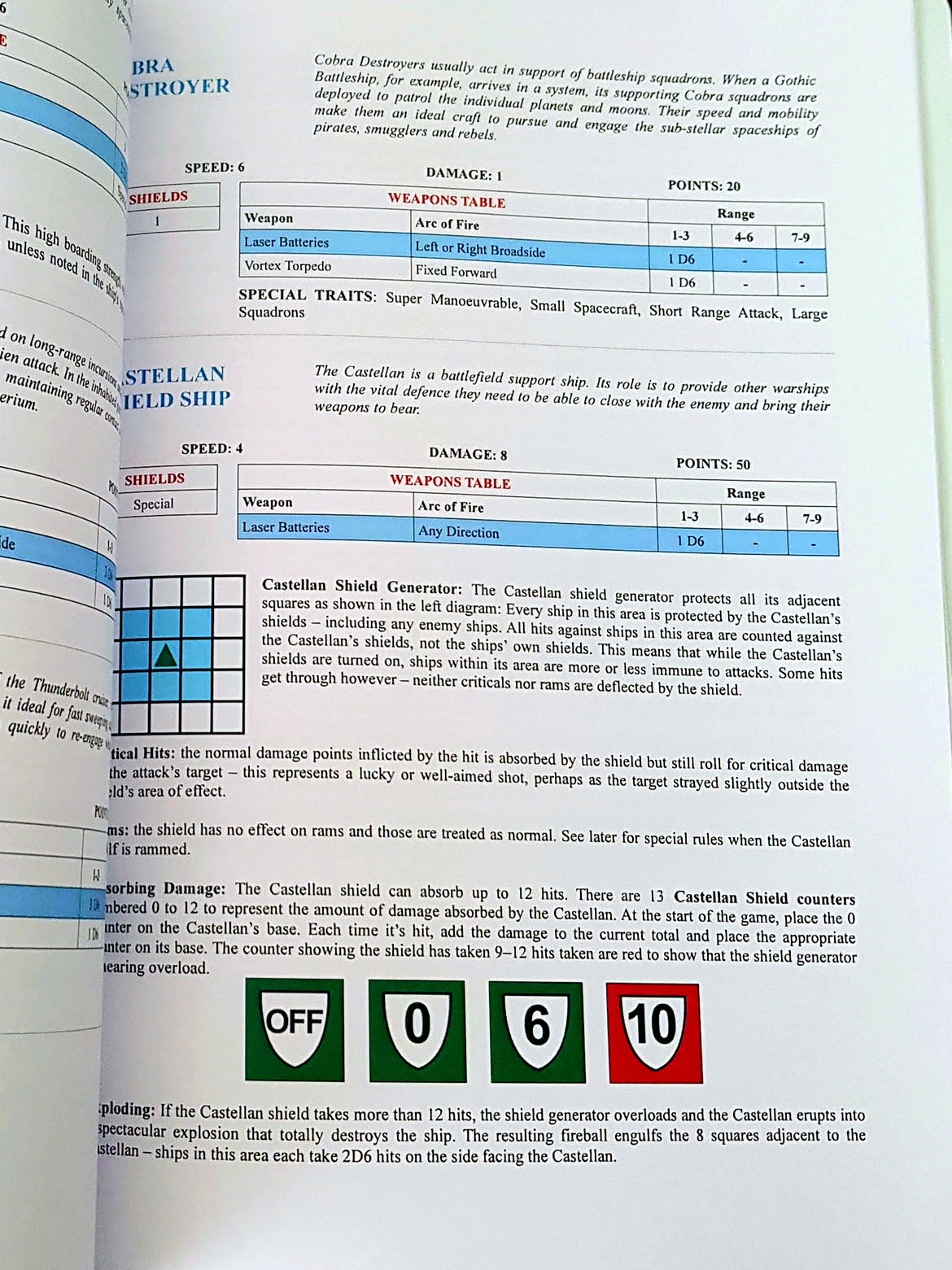 |
| The Space Fleet Remastered rules. |
Back to top
Game Board and Box Lid
The Game Board
Before we get to the rules, we need a proper game board. If you own a Space Fleet box, you already have six game boards with a 4x4 grid on them. These boards include
four with planets printed on them and two without. This setup is sufficient for the two-vs-two ship battles of the original game box and even for a 300 pts. battle
with the extended rules. However, bigger space battles require a larger game board.
Creating additional game boards is easy and affordable. You can simply cut cardboard to the right size, paint it black, and draw a 4x4 grid on it. For a higher
quality version, companies like Deep Cut Studios can print you a custom wargaming mat, though this option is fairly expensive.
I made my game board differently. I took a woman's black scarf, cut it to get a rectangular piece of fabric, and used it as my game board. Women's scarves are
usually larger as mens, but any big enough fabric will do. My scarf fabric was a bit too thin, so I am considering making another one from a thicker material.
I then drew the grid on the fabric with a white permanent marker, using a template beforehand to ensure accuracy.
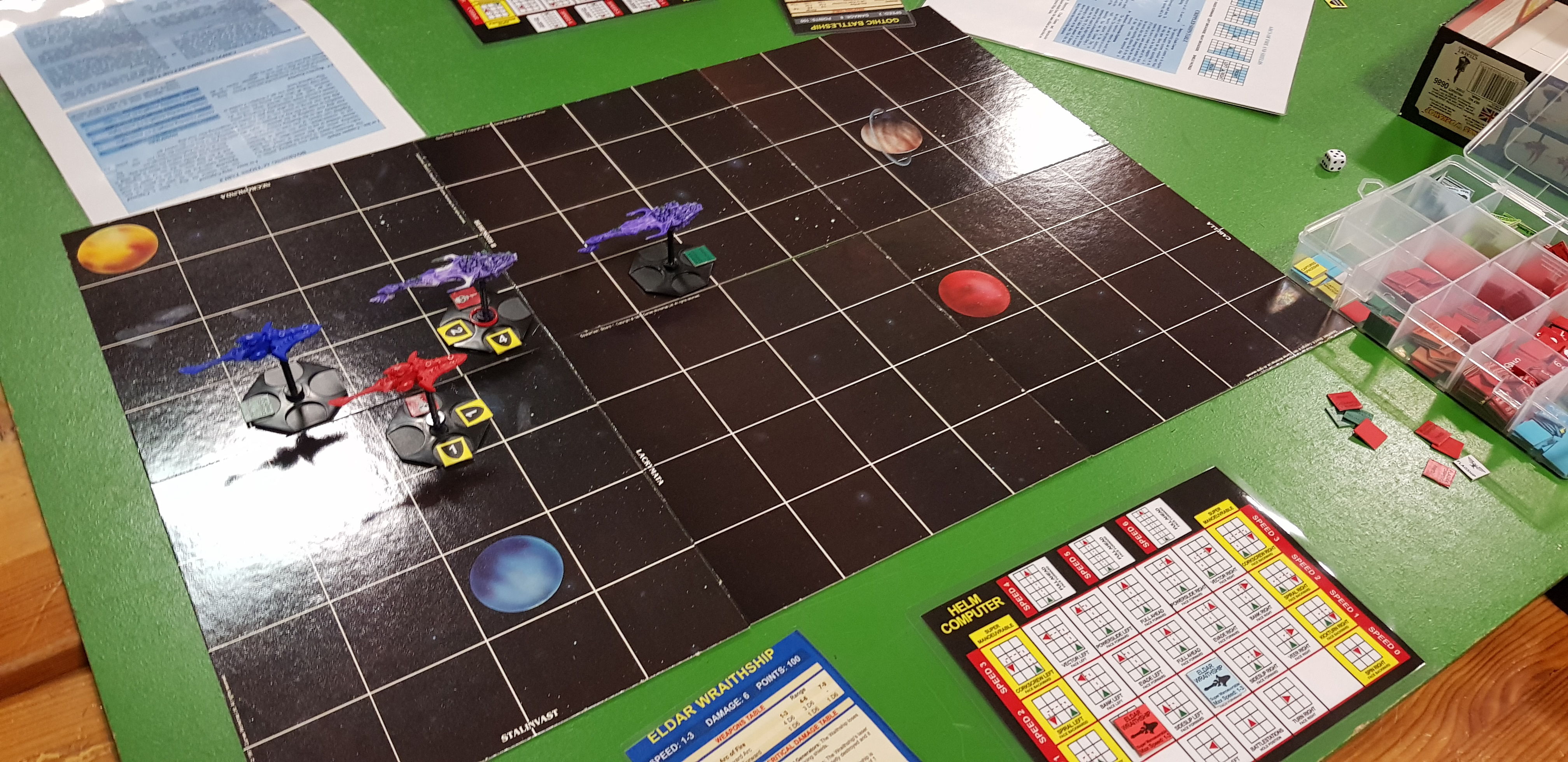
| 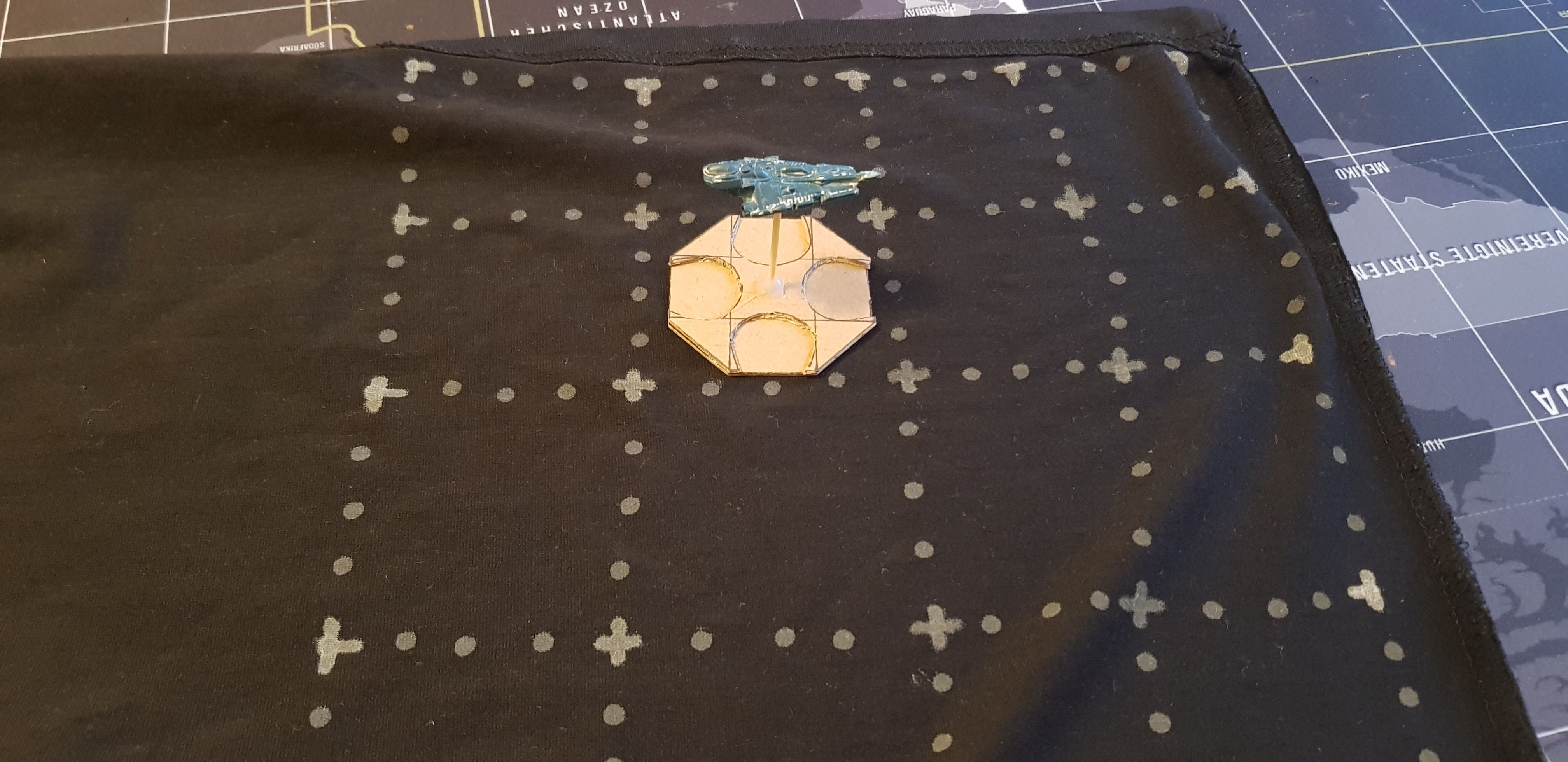
|
| The original cardboard game boards
| The game mat made out of fabric - work in progress.
|
The Box Lid
The original game features a unique dice-throwing mechanic where dice were thrown into the box lid. The underside of the lid had a 3x3 grid printed on it with five
"Hit" squares and four "Miss" squares in the corners. This mechanic is surprisingly fun, but it has some drawbacks.
Firstly, the Space Fleet game box is now a valuable collector's item, so many may be reluctant to use it this way to avoid damage. Additionally, because the game
is quite old, available box lids might be in rough shape, which can influence the dice rolls.
Fortunately, there are several ways to address this problem. Most wargamers will intuitively think of a workaround with dice, which indeed works! You can use
nine-sided dice (D9) and hit on a roll of five or higher. However, nine-sided dice are somewhat unusual and hard to come by. It's possible to order them from places
like China for a reasonable price, but it's unlikely you have some lying around.
A more practical solution is to use ten-sided dice (D10). The probability of scoring a hit with the original grid is 55.56%. With a D10 and a roll of five or higher,
it's 60%. This small difference should not significantly alter the game flow. An even simpler option is to use six-sided dice (D6), with a hit on a roll of four or
higher, giving a 50% probability. This way, you don't need an extra set of dice.
However, there is a general problem with all these workarounds. The number of spots plays a role in determining critical hits and special weapons, so you have to
roll every die twice instead of once to get the same result. For example, you roll x amount of D6 to determine your hits, then roll all hits again to determine if
they are critical hits or not. This can quickly become tedious and detract from the fun of the game.
I tested these methods and don't recommend them. It is much better to craft your own box lid. Another idea is to order a custom dice tray on Etsy for example.
That is the one, you can see below in the picture. I got one to a reasonable price, all I needed to do, was to send in the design for the print. I got two versions
that you can download right here: Combat Tray (Black Font),
Combat Tray (White Font).
But there is yet another way to solve this issue. The user Rantinan made a 3D model of a Space Fleet dice tray on Cults 3D,
you can download it here.
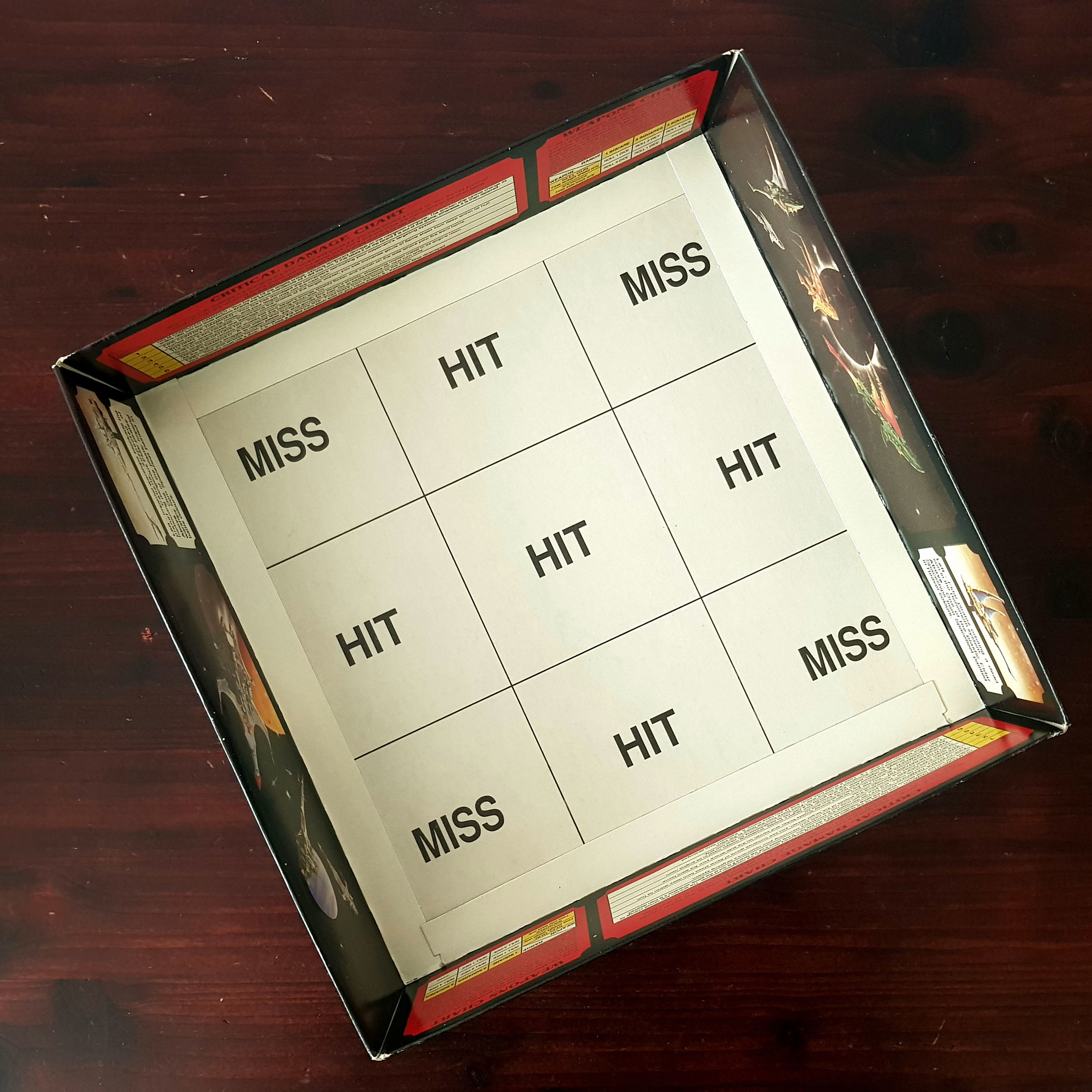 |
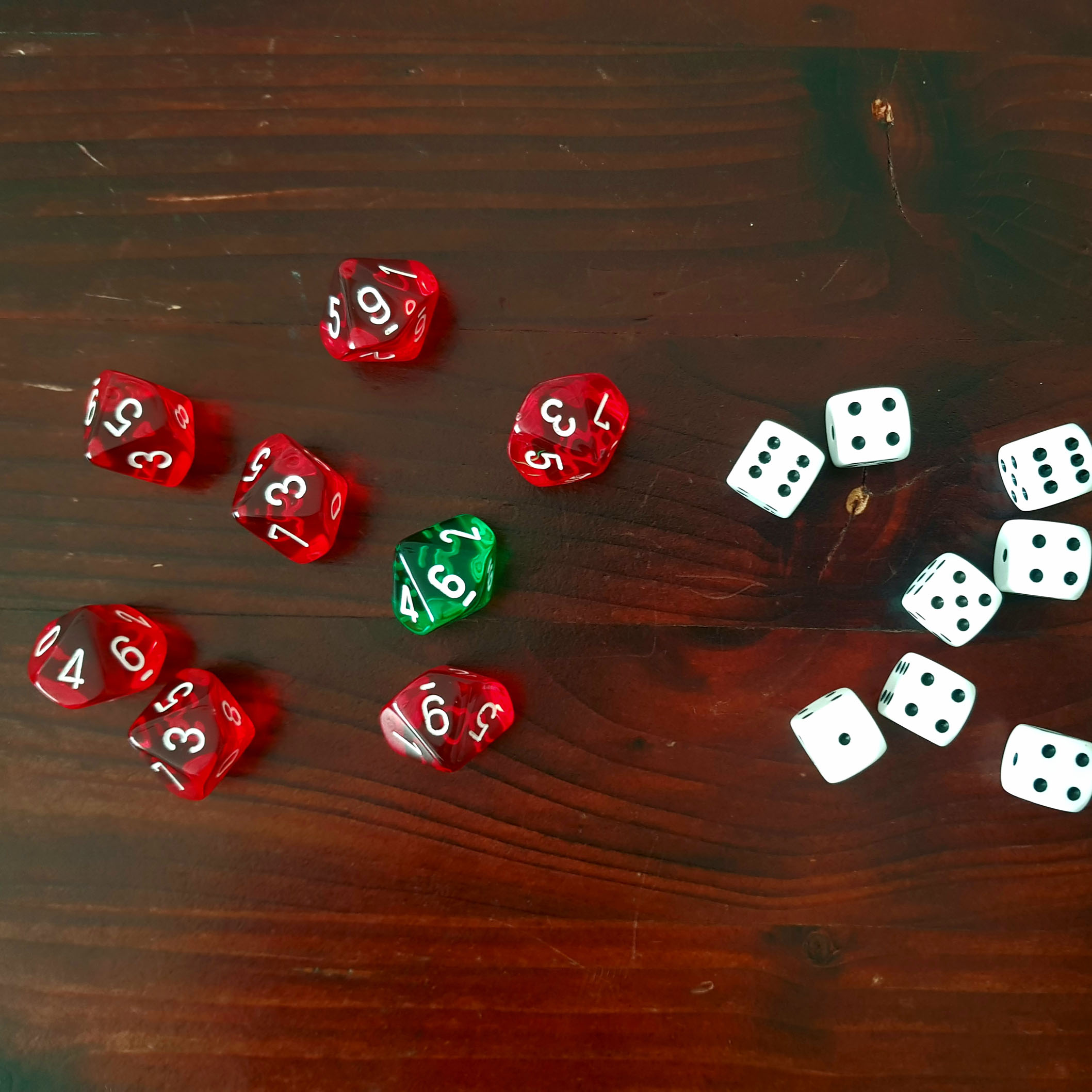 |
| The original Box Lid |
Nine-sided and six-sided dice. |
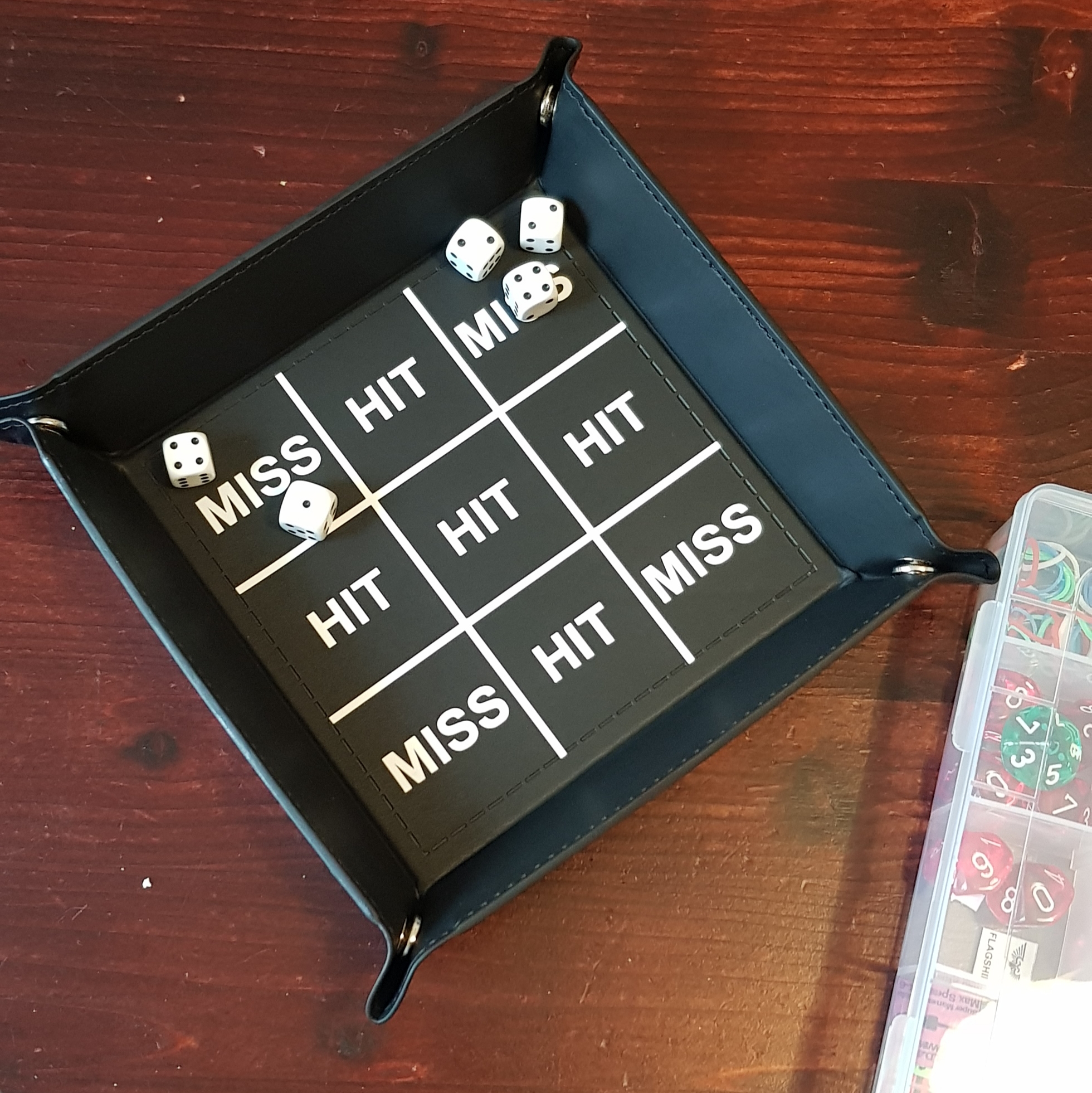 |
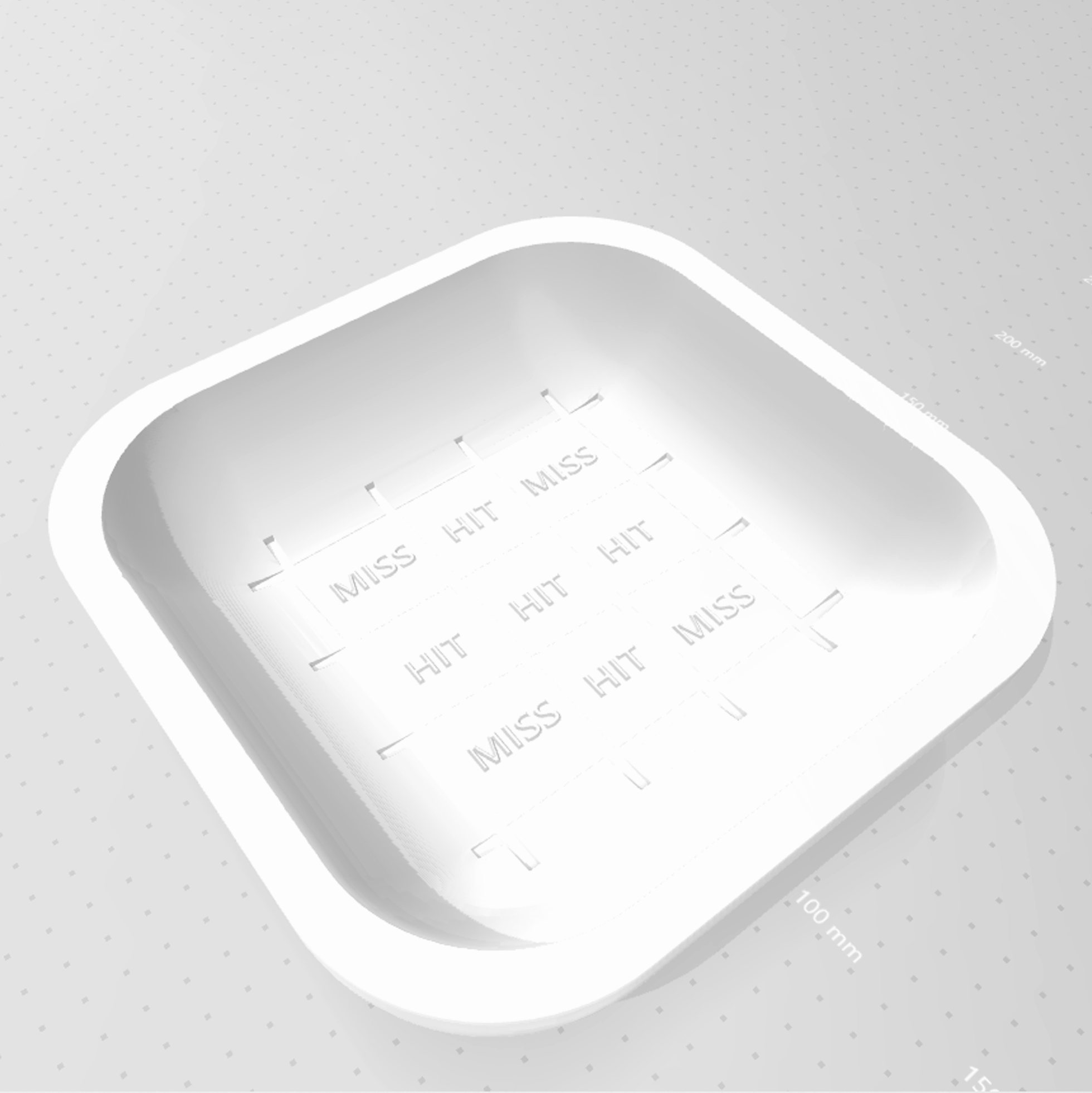 |
| Custom pleather dice try ordered from Etsy. |
3D model "Space Fleet 91 dice tray" by Rantinan. |
Back to top
Data Cards and Helm Computer
Data Cards
Another important aspect of the game is the spaceship Data Cards. Everything you need to know about your spaceship should, in theory, be on them. In the original
extended version, they come in DIN A3 format. They need to be that large because every special rule is spelled out. In my new remastered version, I moved the
descriptions of the special rules to the rulebook under the chapter General Spaceship Traits. Because of this, and because I omitted the pictures, my new Data
Cards are in the much more convenient DIN A5 format.
The Data Card contains the speed of the spaceship, damage points, point value, and special rules. Additionally, every Data Card/spaceship has its own critical hit
table and a schematic drawing showing how many shield points are on each side. Lastly, there is a weapons table. This is all you need to deploy your spaceship into
battle. Every released ship has a new Data Card included as an attachment in the Space Fleet Remastered Rulebook. They also have a thematic backside, which they did
not have in the original White Dwarf release.
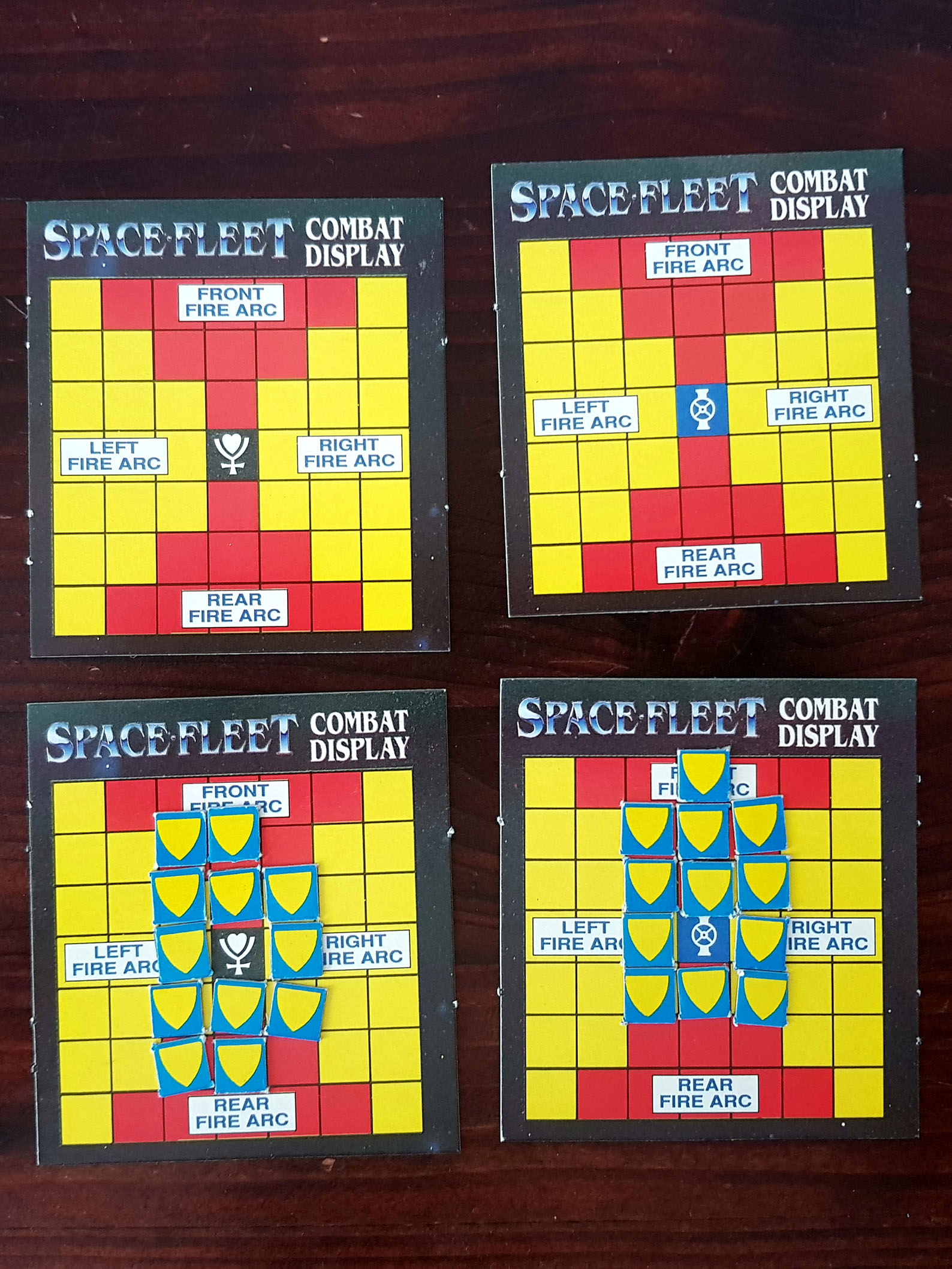 |
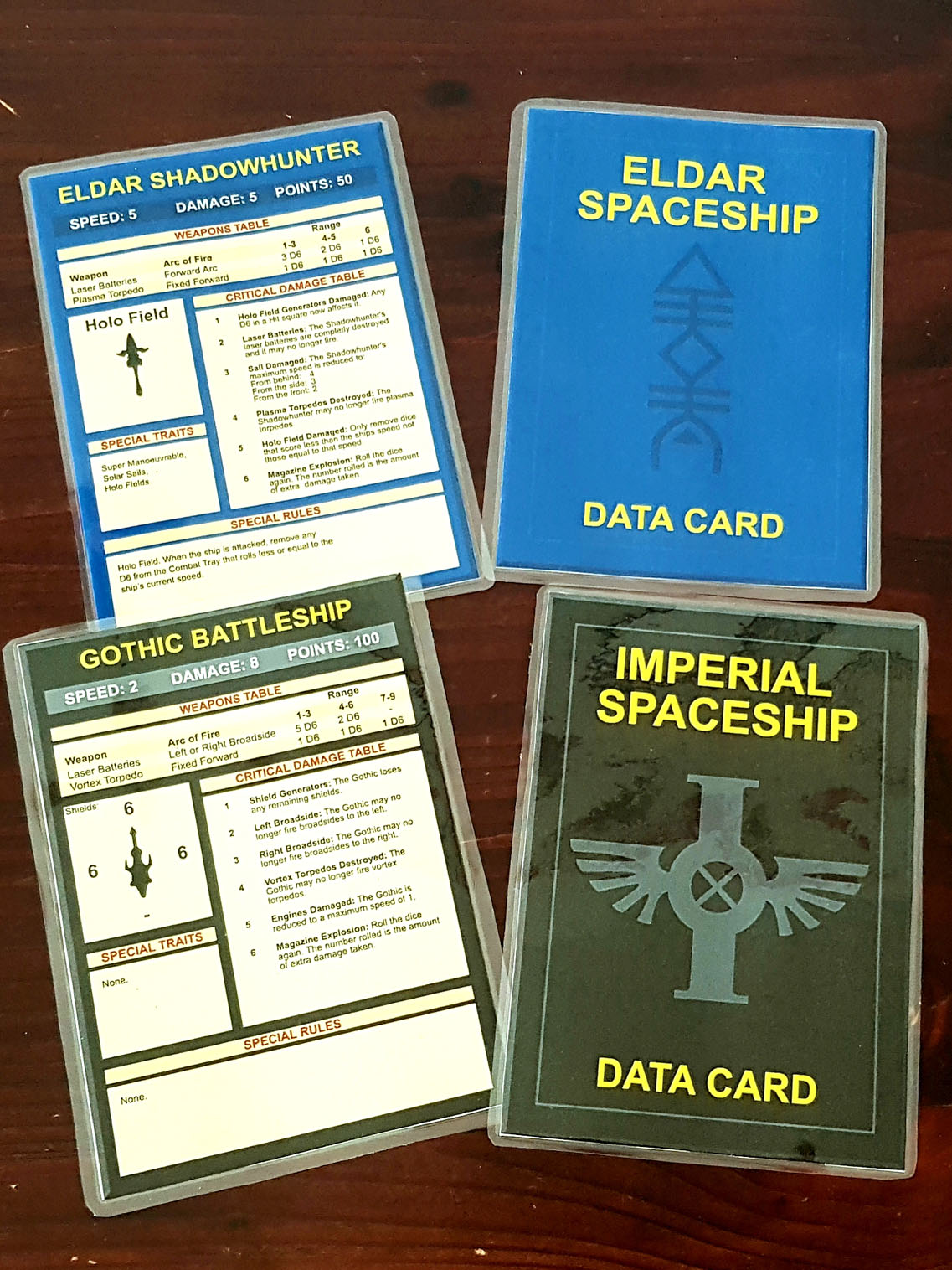 |
| The original Ship Shield Cards. |
The remastered Data Cards. |
The Helm Computer
The Helm Computer is a piece of cardboard with all possible movements printed on it. In the movement phase, both players secretly place a token representing each
squadron on one legal movement. Then, both players move their squadrons simultaneously. It is legal to move through squares occupied by other spaceships, but when
two ships end their movement in the same square, it's considered a ramming attack. That's all there is to it.
In the remastered version, I created a new Helm Computer with fields for "Reform Orders." This new Helm Computer is also included as an attachment in the Remastered
Rulebook PDF.
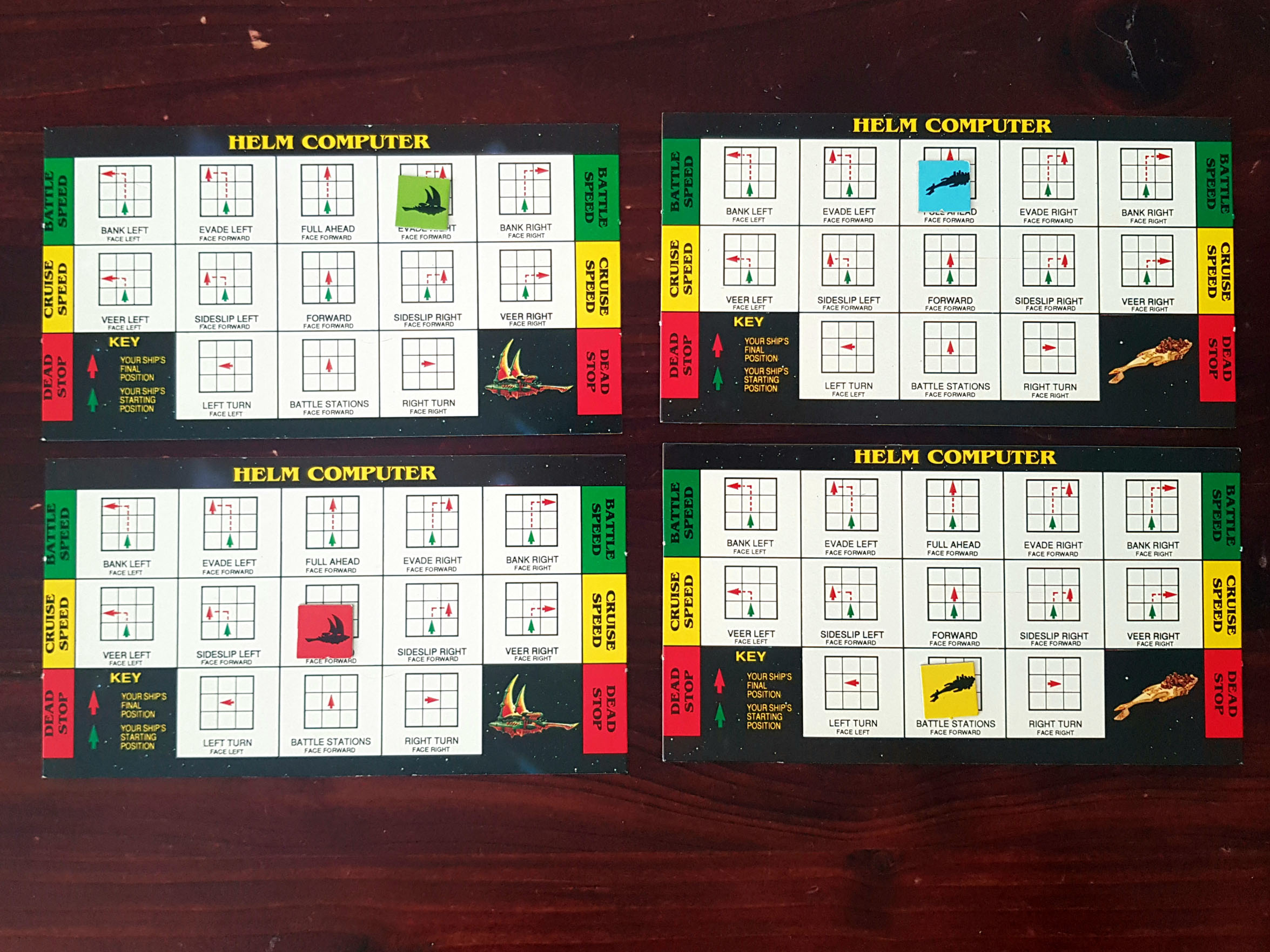 |
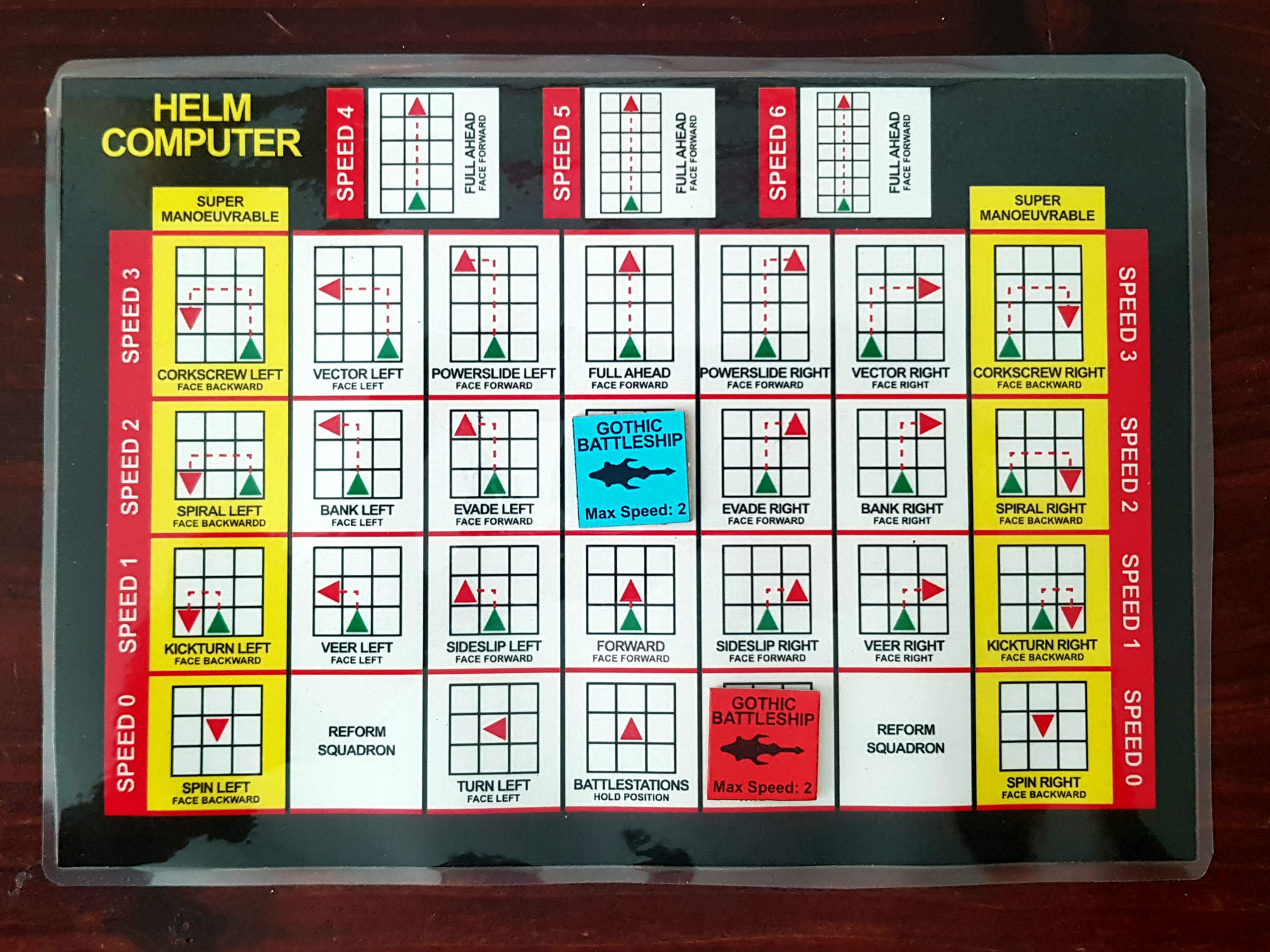 |
| The original Helm Computers. |
The remastered Helm Computer. |
Back to top
|
|
